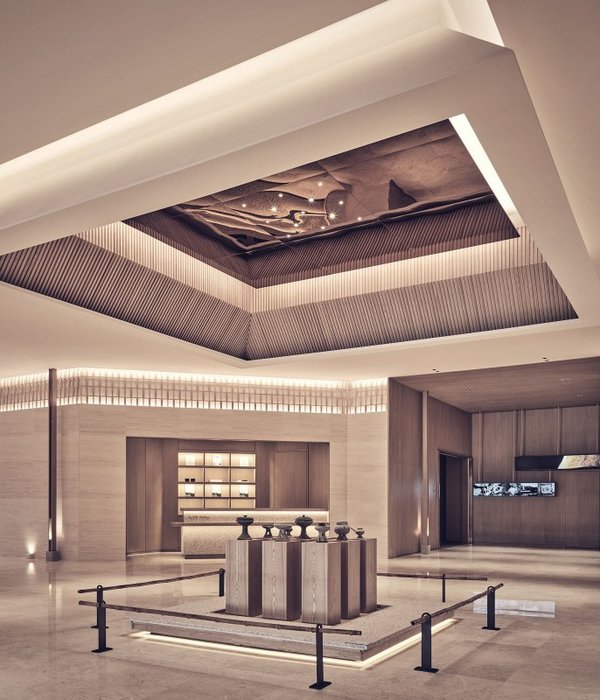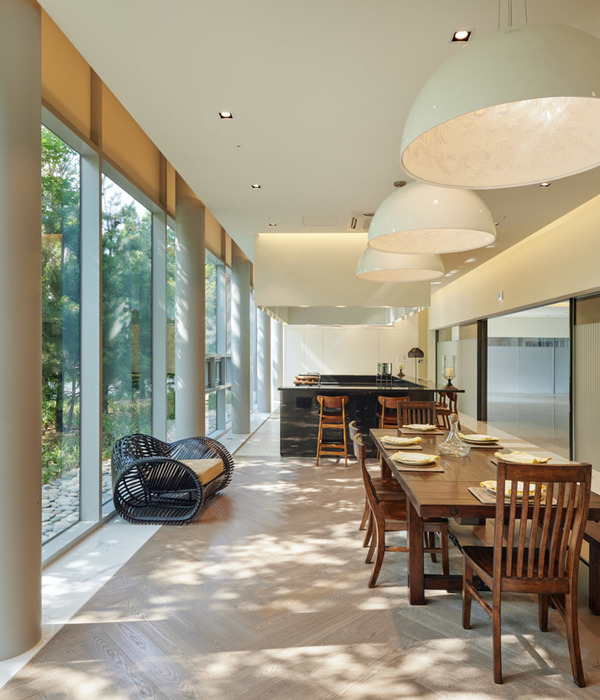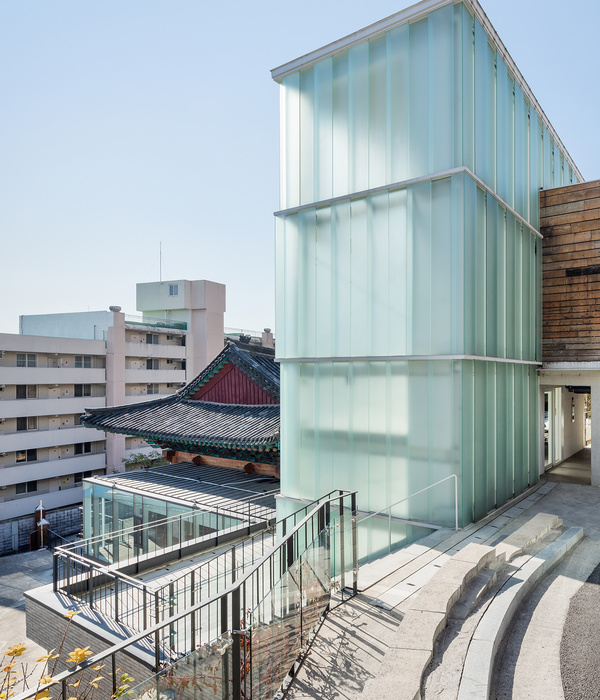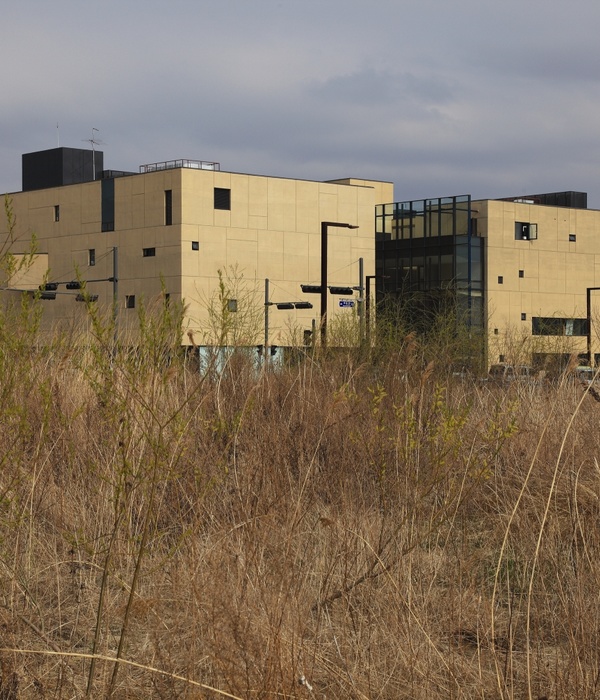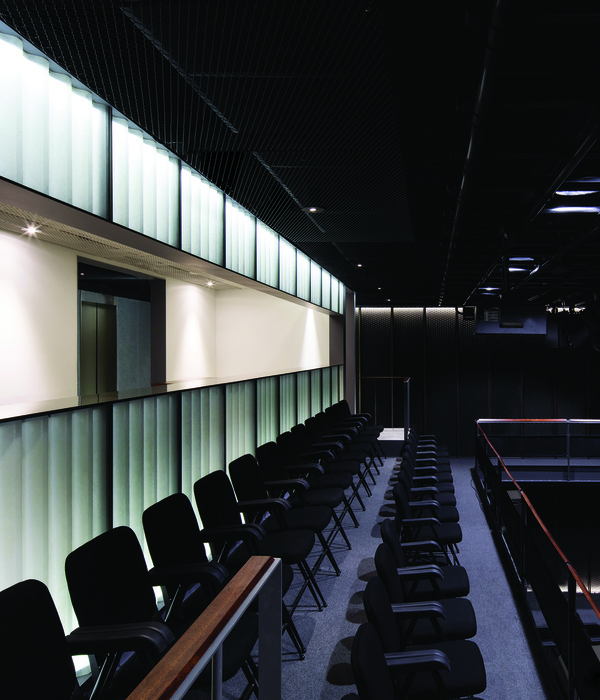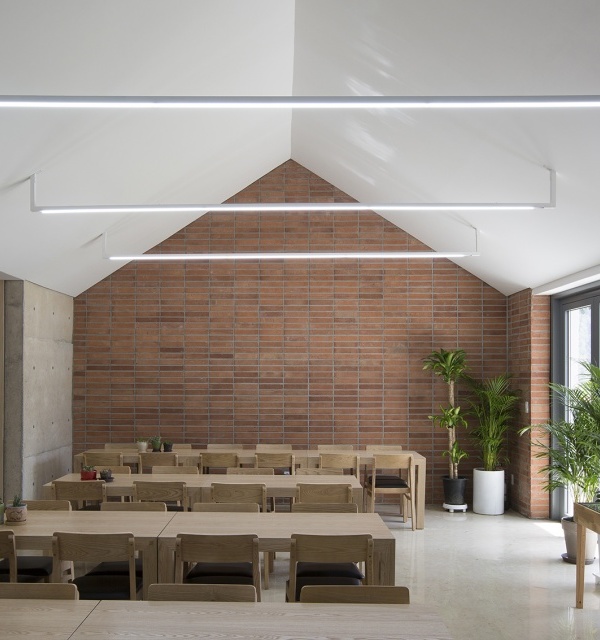如今,全世界都处于气候变化所带来的危险中。同时随着时代的发展,年轻一代的观念和社交距离的定义也有了新的逻辑。那么在这种情况下,我们应该如何构建未来城市中的公共空间?又如何来诠释2020年威尼斯双年展的主题——“我们将如何共生(How will we live together)?”
How can we imagine the future of public spaces in our cities, at a time when warnings and risks of climate change, the #fridaysforfuture generation’s claims, or the new logics of social distancing converge, in a year in which “How will we live together?” is the motto of the Venice Biennale?
▼项目概览,overview ©Javier de Paz
本项目的主题是利用马德里市议会仓库中的废弃材料来制作一系列均等的、可重复使用的可持续家具。F.U.A.是一个生态系统式的公共设施原型。它将社交空间、活力空间和环境空间完美地融合在了一起。当然,与其他的原型一样,F.U.A.也拥有悠久的历史:
Identical, reusable and sustainable furniture made from obsolete materials from the municipal warehouses of the Madrid City Council. F.U.A. is a prototype of public equipment designed as ecology that brings together the social, the energetic and the environmental, and like all prototypes, it has a history:
▼以字母造型为基础的生态系统,the ecosystem
2016年11月,马德里市议会全国环境大会(National Congress of the Environment,缩写为CONAMA)召开。大会提出,材料可以作为工具来提供一种教学经验:以再利用、自然化、可持续性、二次使用性、社会凝聚力、可得性、开源性和参与性等为基础,通过材料的实际处理和物质性,传达出马德里的环境政策。随后,该届大会选取了M、A、D等三个字母作为家具的基础造型,参展者可根据自己的概念在其上增加设计元素。这便是该原型系统的首次亮相。
▼字母A的构造图,the structure of the letter A
In November 2016, the third stand of the Madrid City Council was inaugurated at CONAMA (National Congress of the Environment). For the third consecutive year, the material is a pedagogical experience: a stand that through its operation and materiality shows Madrid’s environmental policies, based on reuse, naturalization, sustainability, second lives, social cohesion, encounter, open source and participation. 3 letters-furniture starred in said stand: M A D
▼原型系统的首次亮相:以M、A、D等三个字母作为基础造型的家具,the first life: the 3 letters-furniture starred in said stand: M A D ©Javier de Paz
▼M、A、D家具外观,exterior view of the letters of M A D ©Javier de Paz
▼家具设有座椅空间,the furnitures with seating spaces ©Javier de Paz
2017年4月,在马德里举行的城市暴力与和平教育世界论坛(World Forum on Urban Violence and Peace Education)上,主办方在M、A、D三个字母家具的基础上,又在主会展空间中增加了三个字母造型——P、A、Z。这是该原型系统的第二次亮相。
In April 2017, in the Peace Forum (World Forum on Urban Violence and Peace Education), which took place in Madrid, three letters P A Z were added to M A D in the main meeting space of the Forum. A second life.
▼原型系统的第二次亮相,the second life of the prototype ©Javier de Paz
▼家具系统与绿植相配合,the furniture with plants ©Javier de Paz
▼家具系统的座椅空间,the seating space of the furniture ©Javier de Paz
▼家具系统细节,details of the furniture ©Javier de Paz
自2017年4月以来,M、A、D和P、A、Z等六个以字母为基础造型的家具体量就一直位于Conde Duque文化中心的北院。该区域与附近的市立图书馆一道,致力于为青少年提供学习空间、为家庭提供聚餐空间、为小孩子提供玩耍空间、为退休人士提供休息空间。这是该原型系统的第三次亮相。
▼M、A、D和P、A、Z六个字母的构造图,the plans of the M A D and P A Z
Since April 2017, M A D and P A Z have been in the north courtyard of the Conde Duque Cultural Center … public furniture in which adolescents study, families snack, children play, retirees rest, in relation to the nearby Municipal Library. A third life.
▼原型系统的第三次亮相:位于Conde Duque文化中心的北院,the third life of the prototype that is located in the north courtyard of the Conde Duque Cultural Center ©Javier de Paz
▼以M、A、D和P、A、Z等六个以字母为基础造型的家具体量,the furnitures based on the letters of M A D and P A Z ©Javier de Paz
▼家具体量的休息区,the seating area of the furniture ©Javier de Paz
▼家具细节,furniture details ©Javier de Paz
2017年夏季,Imagina Madrid 计划决定以其标志性的七个字母——I、M、A、G、I、N、A为原型让人们参与设计。在活动过程中,这七个字母单体通过卡车被依次运往了该计划的9个站点,旨在重新激活马德里不同地区的公共空间。自2018年起,I、M、A、G、I、N、A这七个字母原型便成为了马德里Matadero艺术区的一部分,也可称得上是该原型系统的另一次新生。
▼I、M、A、G、I、N、A七个字母的构造图,the plans of the I M A G I N A
In the summer of 2017, the Imagina Madrid program incorporates seven letters as an identity element: I M A G I N A, which travel by truck to each of the 9 sites in the Imagina program, aimed at reactivating sites and public spaces in different Madrid districts. Since 2018 I M A G I N A is part of the equipment of Matadero Madrid. Another second life.
▼位于不同地点的家具,the furniture located in the different places ©Javier de Paz
▼以I、M、A、G、I、N、A等七个字母为造型基础的家具,the furniture based on the letters of I M A G I N A ©Javier de Paz
▼七个字母家具单体通过卡车被依次运往了其他站点,the furnitures based on the letters of I M A G I N A are travelled by truck to each of the 9 sites ©Javier de Paz
整套可持续的城市家具都是根据重复利用、易于发掘和可移动的逻辑所构建的。设计团队通过回收市议会仓库中的废弃灯具,搭配着由太阳能电池板供电的新LED元件,创造出一个全新的照明和标识系统,并将其与家具体量的金属框架结合在了一起。此外,这个城市家具系统还包括了一系列座椅空间。这些座椅的材料都是从马德里废弃的木制长凳中回收回来的,以前曾被毫无意义地堆积在市议会的家具仓库中。总而言之,这一系列举措都为其他以可持续和社交设计为基础的项目提供了创造性的逻辑思维和宝贵的经验。
▼回收废弃灯具,搭配新的LED元件,创造出一个全新的照明和标识系统,并将其与家具体量的金属框架相结合,a design of metal frames on wheels allows the installation of a lighting and signage system made up of luminaires recovered from municipal lighting warehouses with new LED elements ©Javier de Paz
▼城市家具系统包括了一系列座椅空间,the urban furniture includes seating spaces ©Javier de Paz
▼座椅空间细节,details of the seating space ©Javier de Paz
This whole set of sustainable urban furniture is built from the logic of reuse, encounter and mobility. A design of metal frames on wheels allows the installation of a lighting and signage system made up of luminaires recovered from municipal lighting warehouses (globes of sodium lamps that are gradually being removed and turning into waste) with new LED elements powered by solar panels. In addition, this urban furniture includes seating spaces, built from wooden planks recovered from deteriorated Madrid benches, which had previously been stockpiled in municipal public furniture warehouses. All this experience is a sample of how other sensible and creative logics allow the construction of objects and spaces based on a sustainable and social design.
▼家具夜景,night view of the furniture ©Javier de Paz
Design: David Cárdenas, EEEstudio (Enrique Espinosa), Juanito Jones, Maria Mallo, Lys Villalba, Zuloark. Production: Manuel Muñoz, Lorenzo Pulido. The project reuses old street lamps and woods from Madrid benches, supplied by the Municipal Warehouses for materials in the Villa de Madrid. Client: Madrid City Council – DG Sustainability and Environmental Control. Coordination: María Álvarez. Imagine Madrid. Coordination: Juan López-Aranguren. Date: 2016-2019 Location: Madrid. Spain
{{item.text_origin}}



